Installing a large outdoor sculpture can transform a garden, park, or public space into a captivating work of art. However, the process requires careful planning, the proper equipment, and attention to detail to ensure that the sculpture is safely and securely installed. Whether you are a homeowner, artist, or landscape designer, this article will walk you through the basic steps to install a large outdoor sculpture.
-
Evaluate the Site
Before you begin, it is crucial to evaluate where the sculpture will be installed.
Space and Visibility: Make sure the site you choose has enough room for the sculpture so that it can be appreciated from all angles. Consider sight lines and how the sculpture will interact with its surroundings.
Ground Stability: The ground must be stable enough to support the weight of the sculpture. If necessary, conduct a soil test to determine if additional support, such as a concrete foundation, is needed.
Environmental Factors: Consider the local climate, including wind, rain, and temperature fluctuations. These factors will influence the choice of materials and installation methods to ensure the longevity of the sculpture.
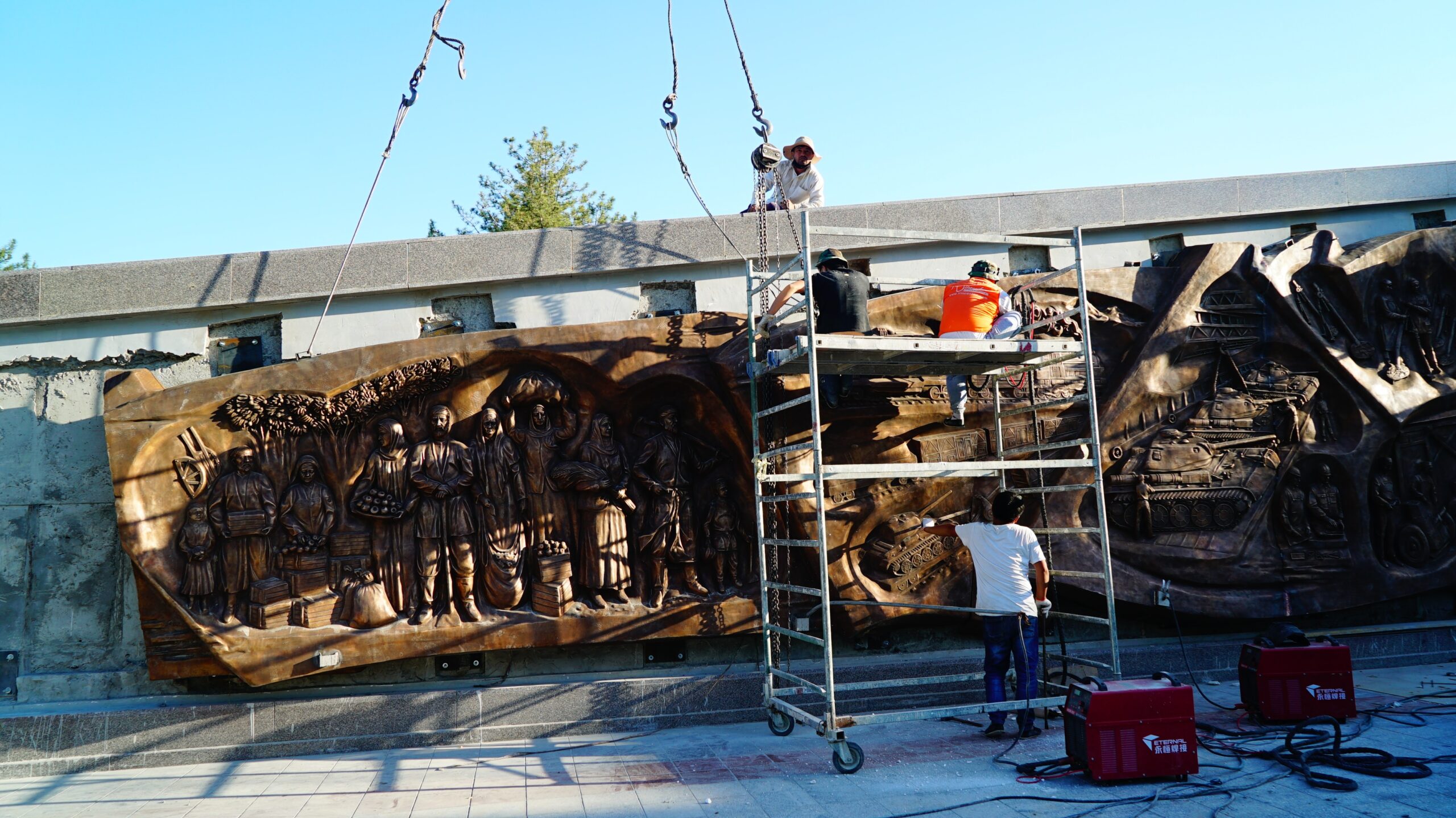
-
Prepare the Foundation
A solid foundation is key to the stability and safety of a large outdoor sculpture.
Concrete Pedestal: For most large sculptures, a concrete pedestal is recommended. The size and depth of the pedestal will depend on the weight of the sculpture and the soil conditions. A typical foundation may be several feet deep and reinforced with rebar.
Anchor Points: Bolts or other fixing methods will be needed to secure the sculpture to the base. Make sure the anchor points are precisely aligned with the sculpture’s mounting brackets.
Curing Time: Allow the concrete base to cure completely before proceeding with the installation. This usually takes at least 24 to 48 hours, depending on the weather and the size of the base.
-
Assembling an Installation Team
Installing large sculptures often requires a team of professionals.
Crane Operators: For very large sculptures, a crane may be required to lift and position the sculpture. Make sure you hire an experienced crane operator who is familiar with handling art installations.
Engineers and Contractors: An engineer may be needed to oversee the installation, especially for complex or heavy sculptures. A contractor can assist with foundation work and securing the sculpture in place.
Art Movers: Professional art movers are trained to move and install delicate and valuable sculptures. Their expertise is essential to avoid damage during installation.
Vincentaa has its own professional installation team, providing professional installation services. As long as you place an order with Vincentaa, your project and products will have one-stop service, ensuring that your project will not have the problem of needing to find a team again separately in the middle of the journey.
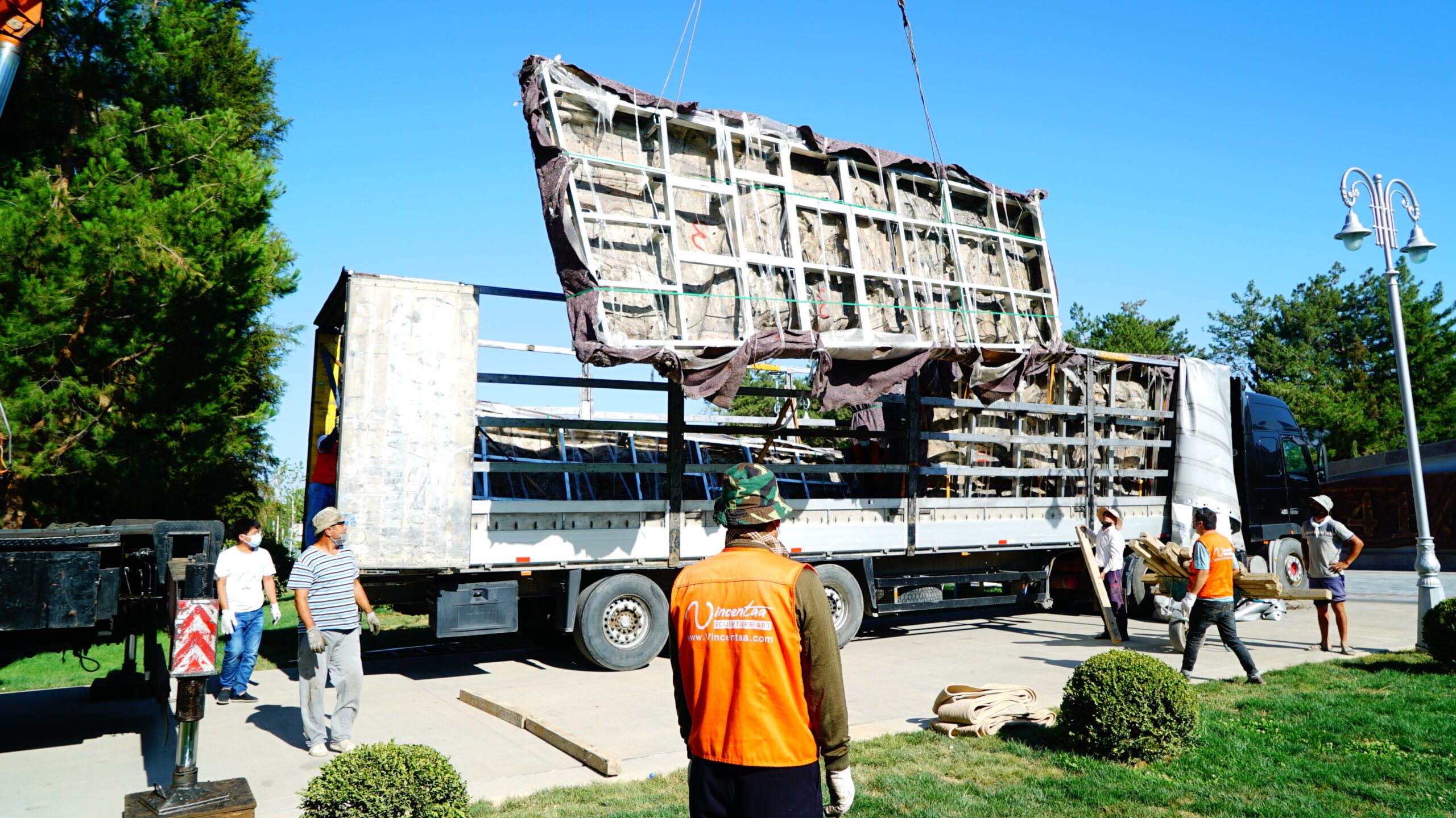
-
Transporting sculptures
Transporting large sculptures requires careful planning to avoid damage.
Safe packaging: Sculptures should be safely packaged to prevent movement during transportation. Use padding, crates, or custom brackets to protect the sculpture.
Transport vehicle: Use a flatbed truck or trailer that can accommodate the size and weight of the sculpture. Make sure the vehicle has the equipment required for loading and unloading, such as a lift gate or ramp.
Permits and routes: Check if you need a permit to transport oversized goods. Plan routes to avoid low bridges, narrow roads, or other obstacles that may complicate transportation.
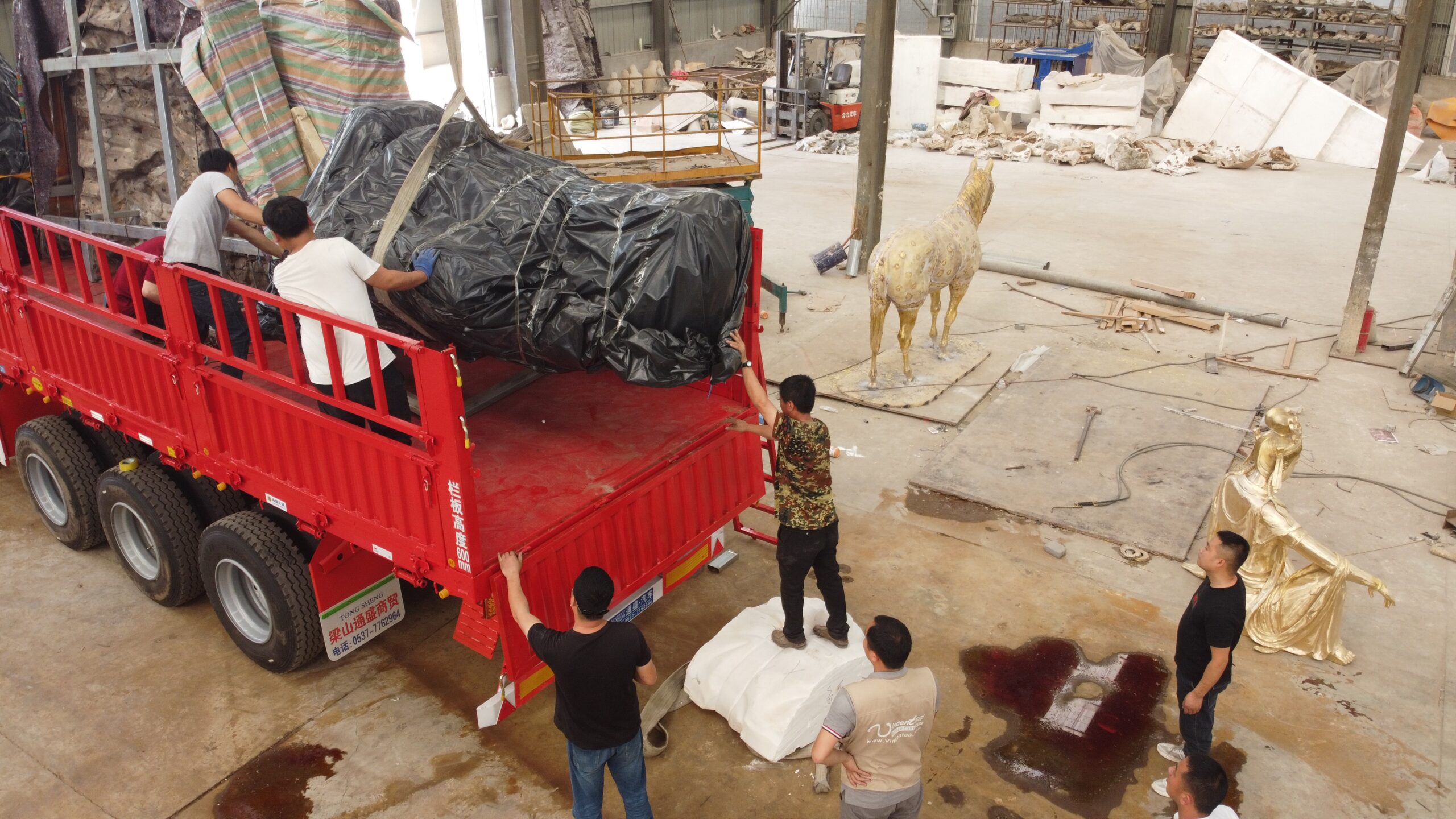
-
Installing the sculpture
Once the foundation is ready and the sculpture is in place, you can start installing the sculpture.
Positioning the sculpture: Use a crane or other lifting equipment to carefully position the sculpture on the foundation. Work slowly and methodically to ensure that the sculpture is properly aligned.
Fix the sculpture: Once in place, use pre-installed anchors or brackets to secure the sculpture to the foundation. Tighten the bolts gradually to evenly distribute pressure and avoid damaging the sculpture.
Final adjustments: Make any necessary adjustments to the position of the sculpture to ensure it is level and oriented as expected. Double-check all connections and fixing points to ensure stability.
As a brand manufacturer with more than ten years of experience in sculpture production, Vincentaa not only has sufficient experience in making sculptures, but also professional installation services. We have professional installers who can install the site according to your products to ensure that your sculpture can have a perfect presentation at your site.
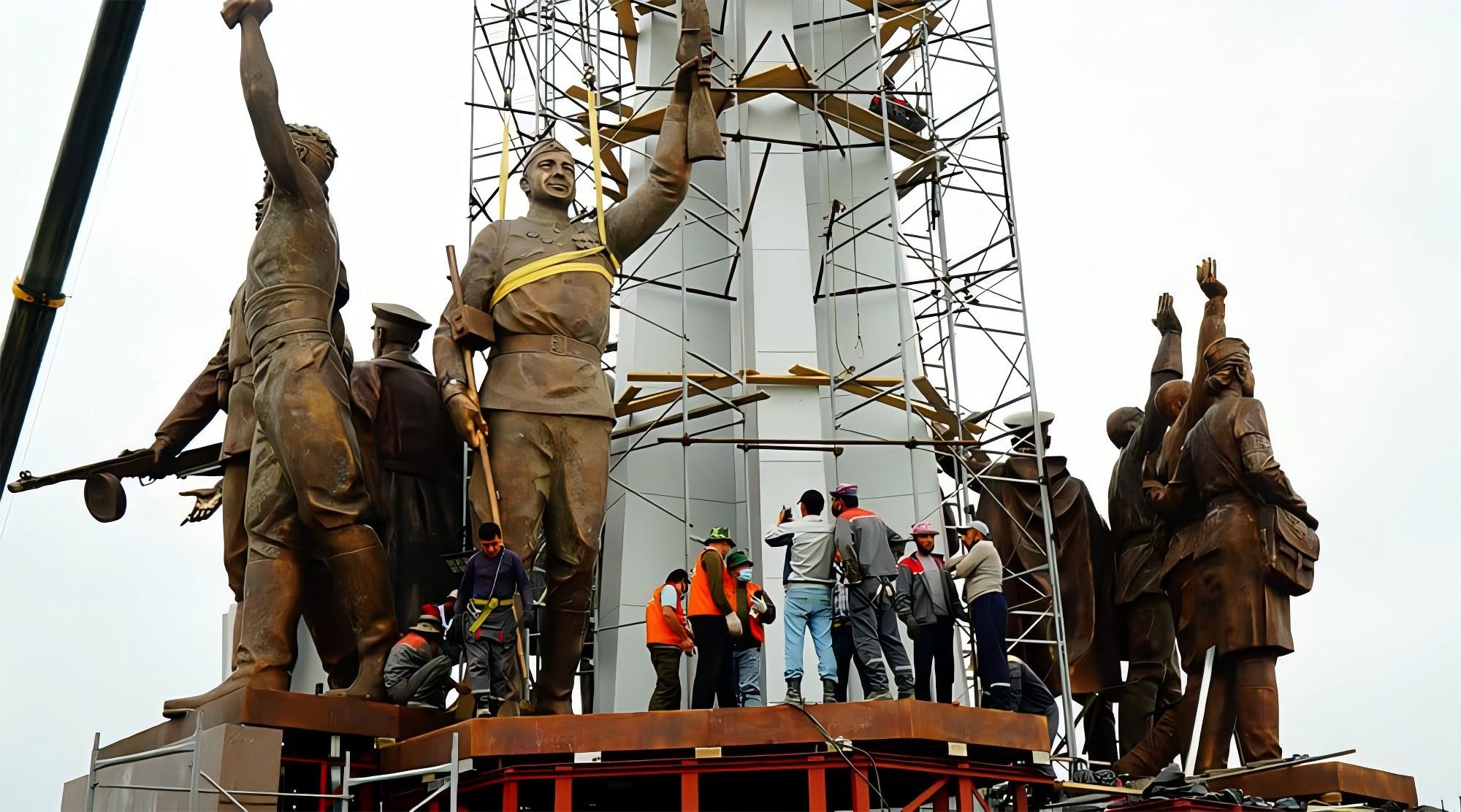
-
Finishing work
After the sculpture is installed, some finishing work is required to complete the process.
Landscaping: If the sculpture is part of a larger landscape design, you may need to add or adjust surrounding elements such as plants, paths or lighting to enhance the overall effect.
Cleaning: Clean the sculpture to remove dust, fingerprints or debris that may have accumulated during transportation and installation. Use appropriate cleaning methods based on the material of the sculpture.
Inspection: Perform a final inspection to ensure that the sculpture is securely installed and there is no damage. It may also be necessary to schedule regular inspections as part of ongoing maintenance.
-
Maintenance Plan
Large outdoor sculptures require regular maintenance to maintain their appearance and structural integrity.
Weatherproofing: Depending on the material, you may need to apply a protective coating to prevent rust, corrosion, or UV damage. For example, a bronze sculpture may need waxing to maintain its luster.
Routine Inspections: Schedule regular inspections to check for signs of wear, structural problems, or environmental damage. Address any issues promptly to prevent further deterioration.
Cleaning: Create a cleaning schedule appropriate for the material of the sculpture. Use gentle, non-abrasive cleaners to avoid damaging the surface.
Installing a large outdoor sculpture is a complex process that requires careful planning, the right equipment, and skilled professionals. By following these steps, you can ensure that your sculpture is securely mounted and becomes a stunning focal point in its environment. Proper installation will not only enhance the visual impact of the sculpture, but also ensure its safety and longevity so that it can be enjoyed for years to come.

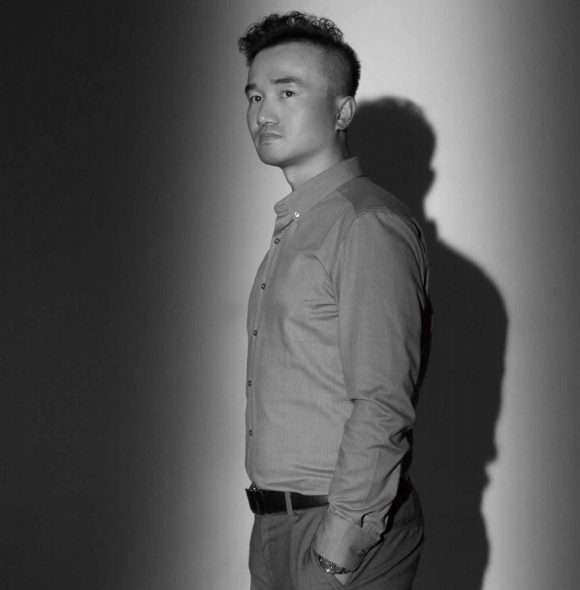
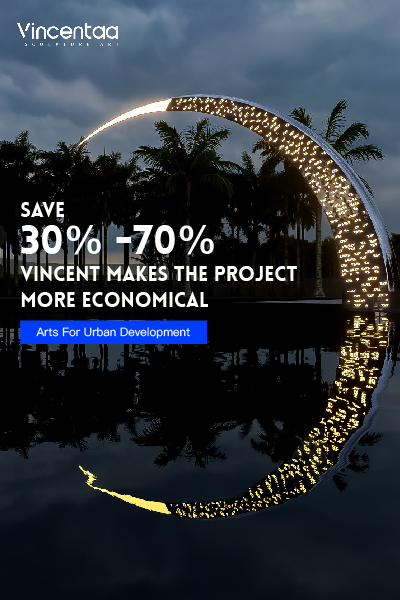
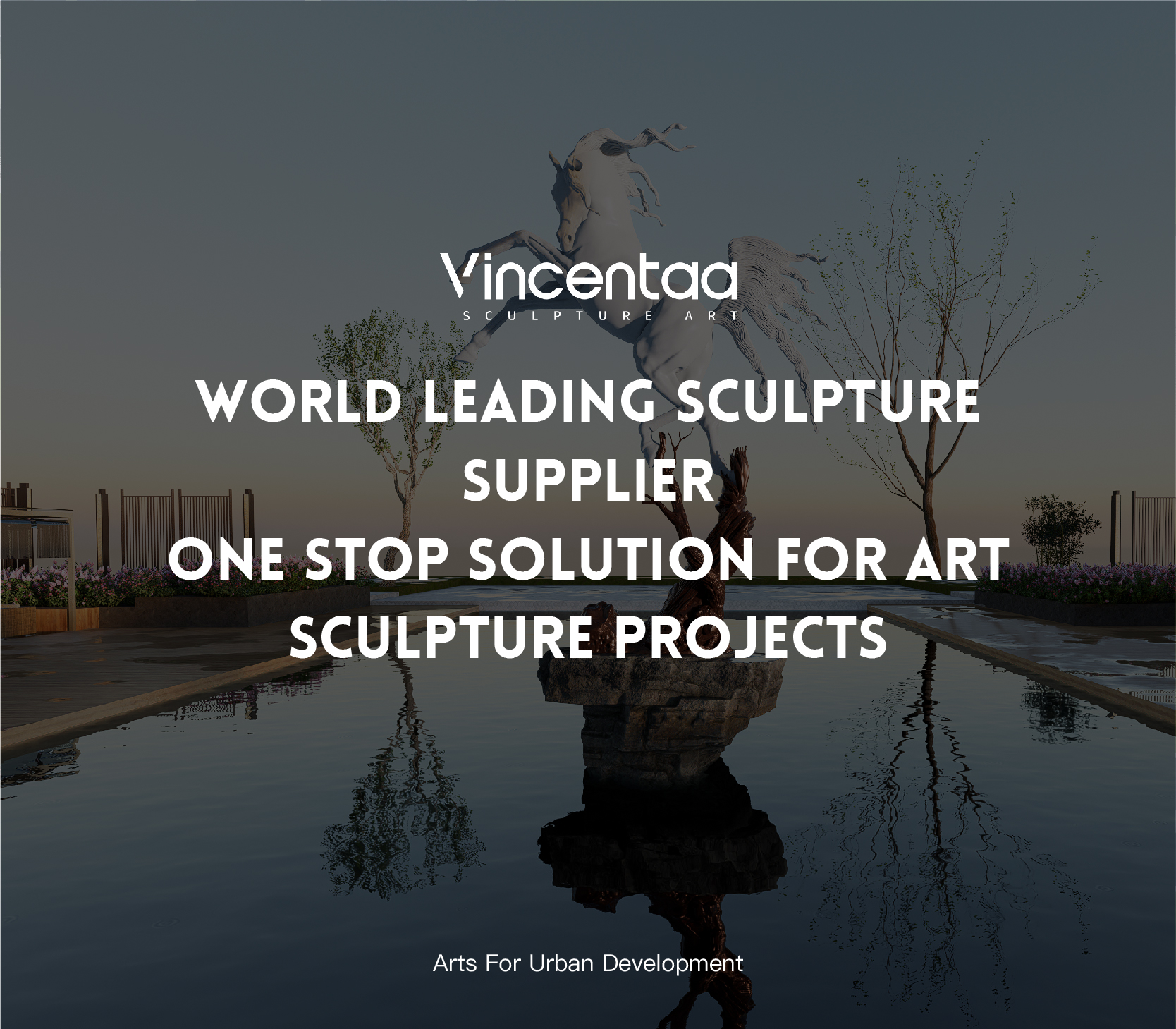

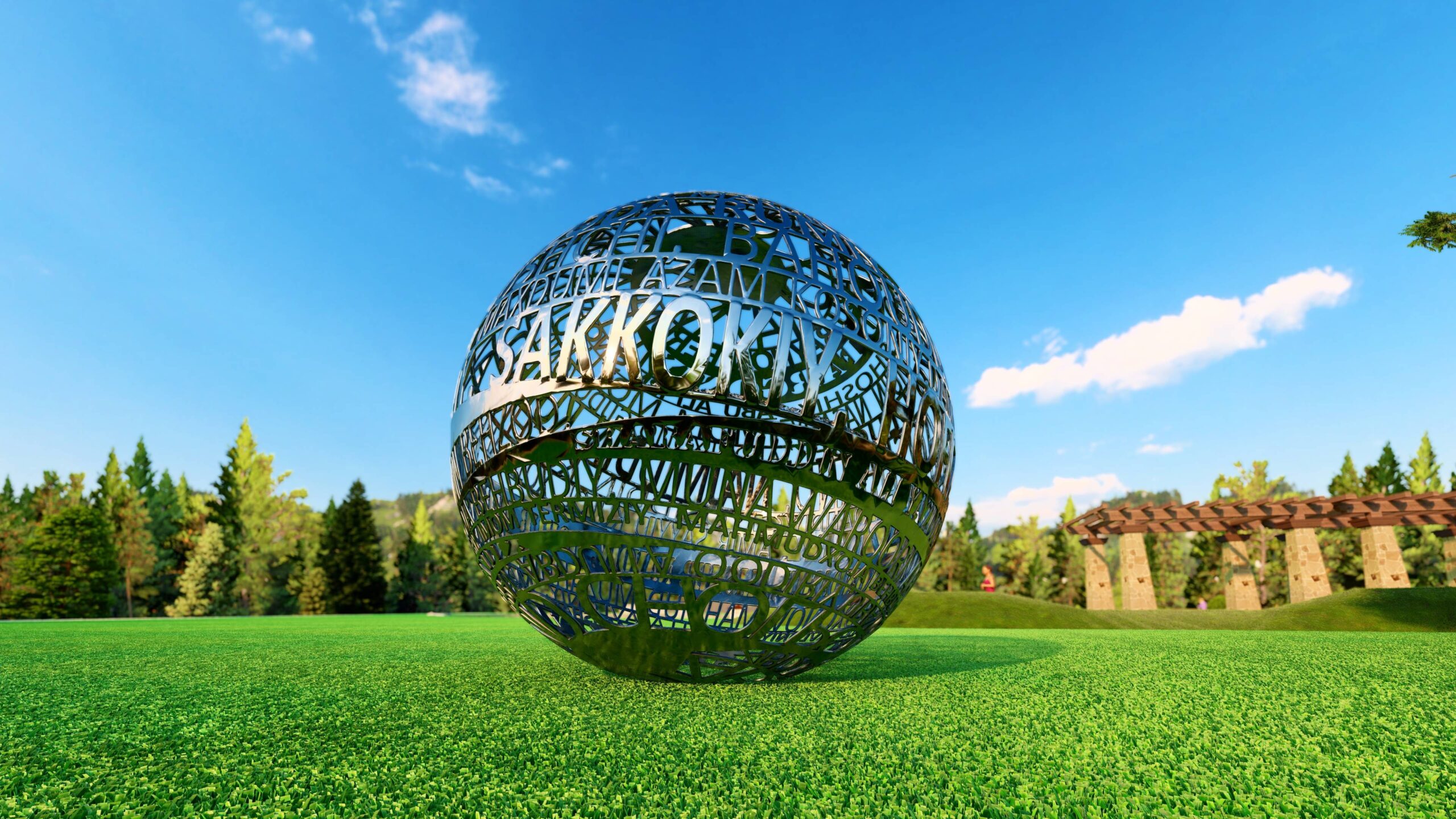




6 回复
Great article! I really appreciate the clear and detailed insights you’ve provided on this topic. It’s always refreshing to read content that breaks things down so well, making it easy for readers to grasp even complex ideas. I also found the practical tips you’ve shared to be very helpful. Looking forward to more informative posts like this! Keep up the good work!
These are actually impressive ideas in about blogging. You have touched some good factors here.
Any way keep up wrinting.
I’m truly enjoying the design and layout of your site. It’s a
very easy on the eyes which makes it much more enjoyable for me
to come here and visit more often. Did you hire out a designer to create your theme?
Outstanding work!
Pretty! This was an incredibly wonderful article. Thank you for supplying these details.
I simply could not depart your site prior to suggesting that
I actually enjoyed the standard information a person provide for your visitors?
Is going to be again incessantly to inspect new
posts
Hi, I do think this is a great blog. I stumbledupon it
😉 I’m going to return once again since I saved
as a favorite it. Money and freedom is the greatest way to change, may you be rich and continue to
help others.